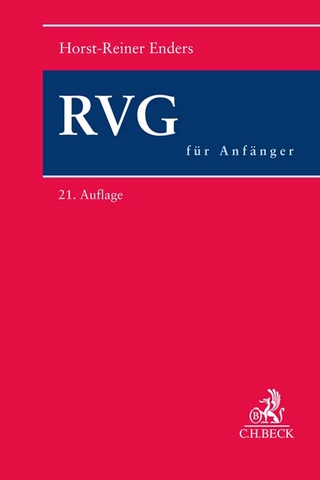
Judicial Review in Norway
Cambridge University Press (Verlag)
978-1-108-42668-8 (ISBN)
Outside the United States, Norway's 1814 constitution is the oldest still in force. Constitutional judicial review has been a part of Norwegian court decision-making for most of these 200 years. Since the 1990s, Norway has also exercised review under the European Convention of Human Rights (ECHR). Judicial review of legislation can be controversial: having unelected judges overruling popularly elected majorities seems undemocratic. Yet Norway remains one of the most democratic countries in the world. How does Norway manage the balance between democracy and judicial oversight? Author Anine Kierulf tells the story of Norwegian constitutionalism from 1814 until today through the lens of judicial review debates and cases. This study adds important insights into the social and political justifications for an active judicial review component in a constitutional democracy. Anine Kierulf argues that the Norwegian model of judicial review provides a useful perspective on the dichotomy of American and European constitutionalism.
Anine Kierulf is Research Director at the Norwegian National Human Rights Institution.
1. Introduction; 1.1. Background and context; 1.2. Norway in a nutshell; 1.3. Review under the constitution – and the ECHR; 1.4. Book structure and terminology; 2. Legal foundations and doctrinal specifics; 2.1. Introduction; 2.2. The Norwegian Supreme Court; 2.3. The form of and basis for constitutional review; 2.4. The basis for ECHR review; 3. Foundations reviewed: the formative 1800s; 3.1. Outline of a nation constituted; 3.2. Courts, lawyers and background for judicial review; 3.3. On not losing sight of (some) individuals; 3.4. Review discussions prior to the 1866 case; 3.5. The 1866 case; 3.6. Arguments following 1866; 3.7. Liberal constitutionalism defined; 4. The emerging regulatory state and a constitutional watershed (early 1900s); 4.1. Constitutional questions arising – and discussed; 4.2. The waterfall case; 4.3. Legal opinions of 1912 and 1916; 4.4. Legal opinions following the 1918 case; 4.5. Parliamentary debates on review abolishment; 4.6. Constitutional case adjourned; 5. Post-WWII: social democratic constitutionalism?: 5.1. Introduction: review revival; 5.2. Occupation and post-war adjudication; 5.3. Regulatory reconstruction; 5.4. Law, politics and history; 5.5. Conquer and divide – preparing the expropriation statute; 5.6. The Kløfta case; 5.7. Kløfta case follow-up; 5.8. Judicial review confirmed; 6. Debates of ECHR review (1950–2000); 6.1. Introduction; 6.2. 'Original intent'; 6.3. On ECHR review prior to the HRA – the doctrine of clarity; 6.4. Preparations for the human rights act of 1999; 6.5. The power and democracy project; 6.6. Post-national constitutionalism?; 7. Dual review expressed (2000–2010); 7.1. Basis and case selection; 7.2. Speech vs personality rights: reputation; 7.3. Speech vs policy: political advertising; 7.4. Free speech review: a synthesis of ideals?; 8. A triple constitutional review revival: 2010; 8.1. Prelude; 8.2. 2010 Cases; 8.3. 2010 Cases Debate and Follow up; 8.4. Constitutional review reflections; 9. 2014–2015: rights reform – and judicial review constitutionalization; 9.1. The 2014 Constitutional Reform; 9.2. Judicial review constitutionalization; 9.3. Constitutional revitalization; 9.4. Dual review constitutionalized; 10. Looking back – and forward: 10.1. Legitimacy ideals disentangled; 10.2. Political review challenges; 10.3. Judicial review challenges; 10.4. A bicentennial debate.
| Erscheinungsdatum | 21.09.2018 |
|---|---|
| Reihe/Serie | Comparative Constitutional Law and Policy |
| Zusatzinfo | Worked examples or Exercises |
| Verlagsort | Cambridge |
| Sprache | englisch |
| Maße | 157 x 235 mm |
| Gewicht | 580 g |
| Themenwelt | Recht / Steuern ► EU / Internationales Recht |
| Recht / Steuern ► Öffentliches Recht | |
| Recht / Steuern ► Privatrecht / Bürgerliches Recht ► Berufs-/Gebührenrecht | |
| Sozialwissenschaften ► Politik / Verwaltung ► Vergleichende Politikwissenschaften | |
| ISBN-10 | 1-108-42668-9 / 1108426689 |
| ISBN-13 | 978-1-108-42668-8 / 9781108426688 |
| Zustand | Neuware |
| Haben Sie eine Frage zum Produkt? |
aus dem Bereich


